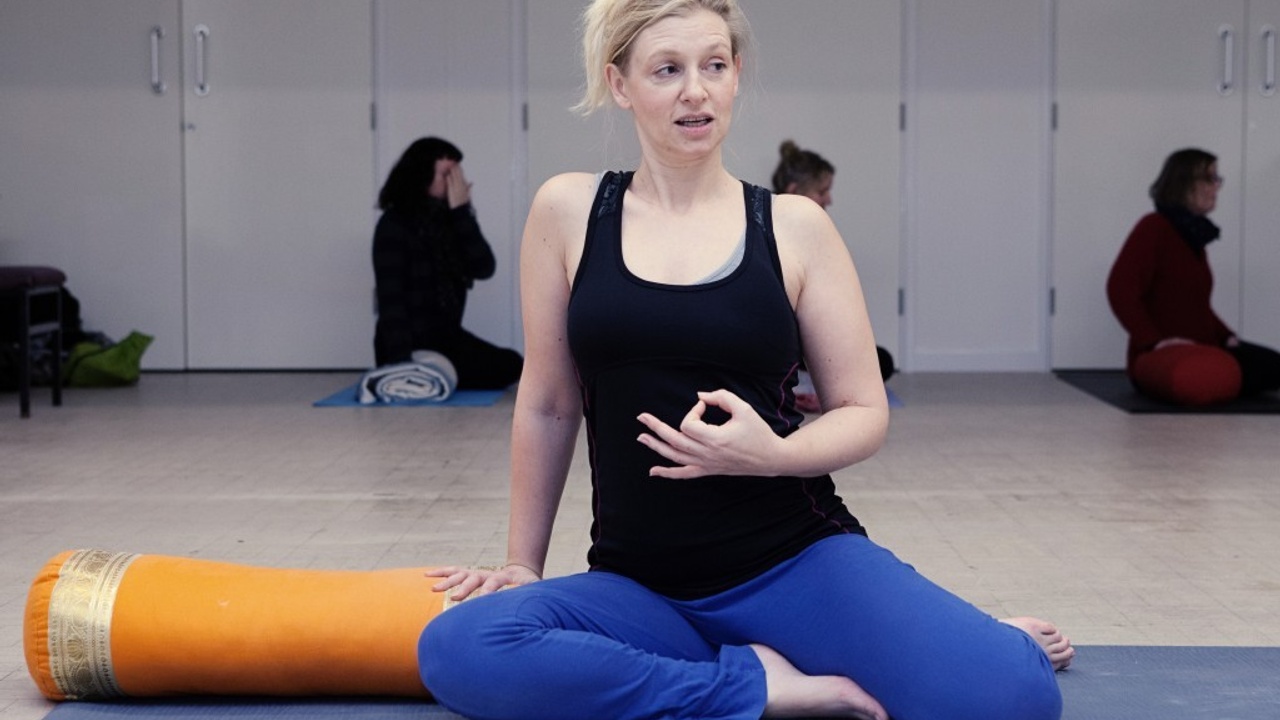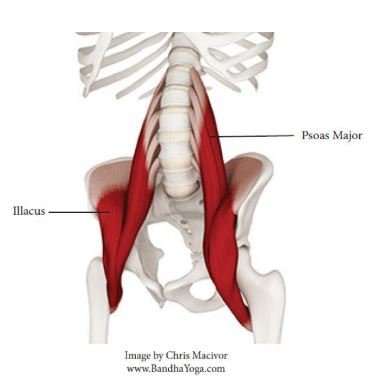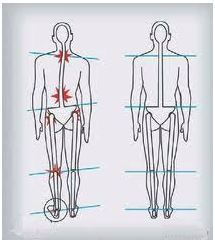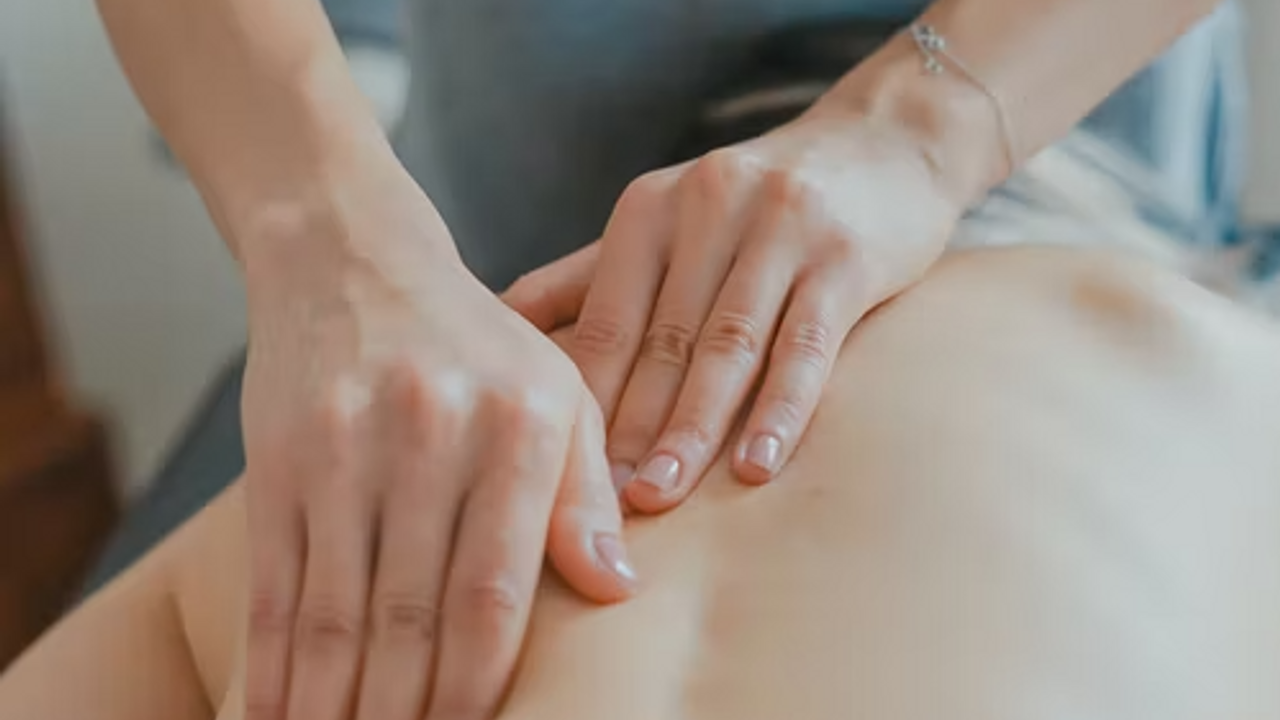The psoas muscle that allows us to stand proudly upright, is located deep within the front hip joint and lower spine. As a potential source of lower back and hip pain, to simply view its involvement in a mechanistic way is to only see a fraction of the bigger picture. As the only muscle that connects top and bottom body, its role in bipedal standing and walking is critical for alignment and movement, but also for our feelings of well-being. As we gauge its ease or non-ease from deep in the belly, tension in the psoas affects us on a deeply emotional level; it acts as a messenger to and from the brain and stores responses to replay them when we remember, imagine or revisit situations that cause us difficulty.
Adding some simple movements and sensitivity to your exercise programme can make the difference between creating more tension and finding a fluidity and refinement of movement that feels in concord with your natural body needs.
The Psoas Muscle
The psoas is a multi-joint muscl...
Pelvic Asymmetry
If we look at an anatomical picture of the human skeleton, it would be easy to assume that being fully symmetrical has some kind of normality. Yet, it is actually extremely rare for us to stand equally weighted on both feet, unless instructed to do so in an exercise class. So many people may be unaware that they may have repercussions in the lower back, hips, knees and shoulders from pelvic asymmetry (PA).
The pelvis is the bony bowl-shaped structure at the bottom of the spine; where our legs attach and the cradle for the lower spine bone (the sacrum) to sit into. It can be tilted away from its healthiest positioning in many ways, including forward (anterior), back (posterior), or with rotation, but here we are focussing on lateral or side asymmetry. This is also known as Pelvic Obliquity, where it is tilted to one side, with the spine curved to the opposite. One side of the pelvis is higher than the other, so when standing the top of one iliac crest (felt as the t...
Easing spinal compression/spinal stenosis
With the inevitability pushing down of gravity we can expect some spinal compression as part of the natural ageing process, but what happens when this tips over into pathology and pain? With more and more people suffering back pain, some understanding of where the design of our spine meets how we move – and modern postural patterns – may help us find space and relief at our central axis.
The human spine is curved (see fig.1) in an s-shape and this is an important design for our bipedal (two-legged) upright sitting or standing stance; it allows the weight distribution to shift as we move and hold our head and organs vertically up from the ground.
Our spines consist of 24 individual sections of bone (vertebrae) with rubbery discs in between to keep them separate and the whole spinal column freely mobile. This also creates space for the spinal canal, a cavity running through each of the vertebrae, which encloses the spinal cord, spinal nerves,...
Research shows that around 75-85 percent of the American population experience back pain in their lives (Neurol Clin.,2007;25(2):353-7). Contrary to much investigation into inflammation (such as arthritis) and more serious conditions, most of the root cause is understood to be structural and mechanical in nature – affected by the way we move, live and use our bodies day-to-day.
Those with sedentary jobs have higher incidence and less when they move around regularly (Indian J Occup Environ Med. 2016;20(3):125-128). Much sitting on chairs can shut down the natural outward range of motion (ROM) in the hips and alter the natural ‘C-curve’ of the lower back, creating a compression into the discs of the lumbar spine (the lower back) whether we tend to sink into a forward or backwards placed pelvis. Chair sitting and sofa slumping has replaced sitting on the floor, often cross-legged or with legs bent to one side on the ground in ways that our musculo-skeletal system evolved.
These body set...
With experts estimating that 80% of people will experience lower back pain at some time in their lives (Neurol Clin. 2007;25(2):353-71), this is an issue that is only getting worse as we spend more time sitting on chairs. It is no surprise that moving is an effective antidote for this debilitating issue (Spine. 2008;8(1)213-225), but the pain involved can create a Catch-22 cycle. The holding and fear of exacerbating the issue can leave people avoiding exercise, becoming confused about their capabilities, and what can help, and what can worsen their symptoms.
The sacroiliac (SI) joint

Understanding some lower back anatomy can help us make sense of why this area may become a source of tightness, pain or inflammation. Many issues arise at the SI joints, the two sites where the lowest bone in the spine – the sacrum – sits into the bowl-like bone of the pelvis (fig.1). These joints are calibrated to the very individually human bipedal way of standing, so the sacrum acts like a keystone ...












